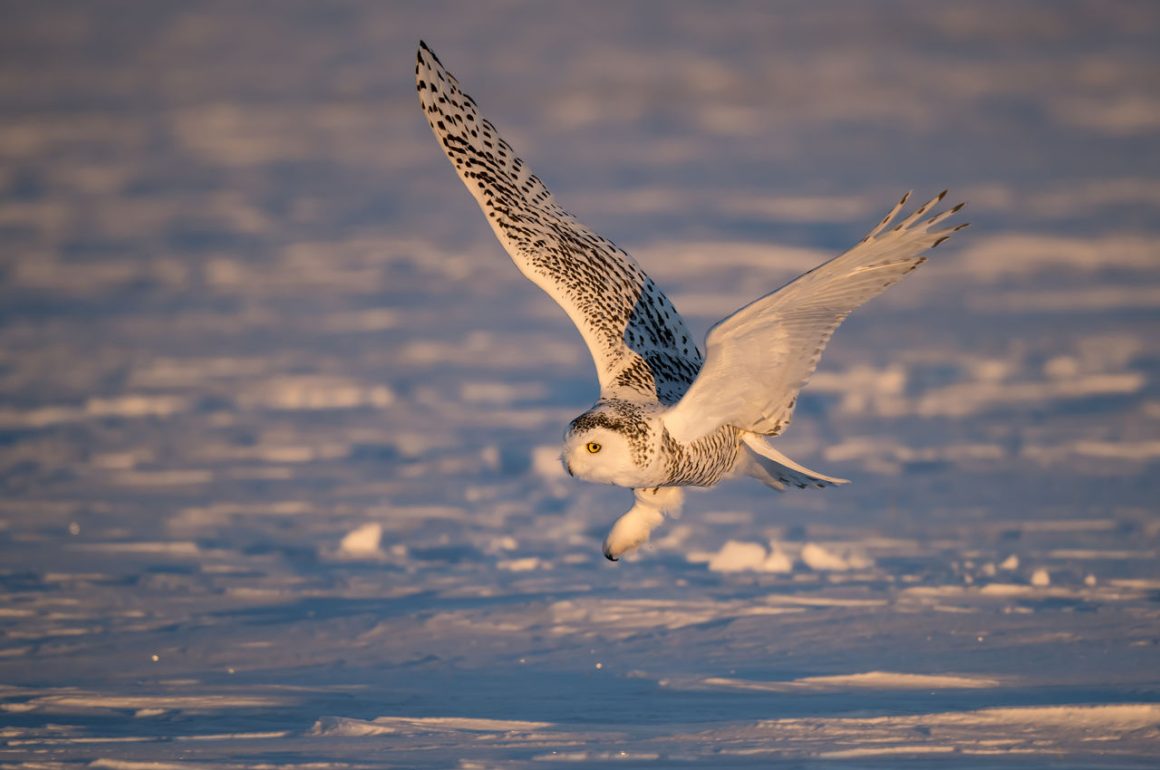
While the scientific name of the Snowy Owl, Bubo scandiacus suggests that the species has a specific connection to Scandinavia, it really has a circumpolar distribution – its breeding grounds are in the arctic tundra, and some of the birds winter somewhat further south. It is in such a wintering area, Inner Mongolia near Hailar, that the photos in this post were taken in December 2024.
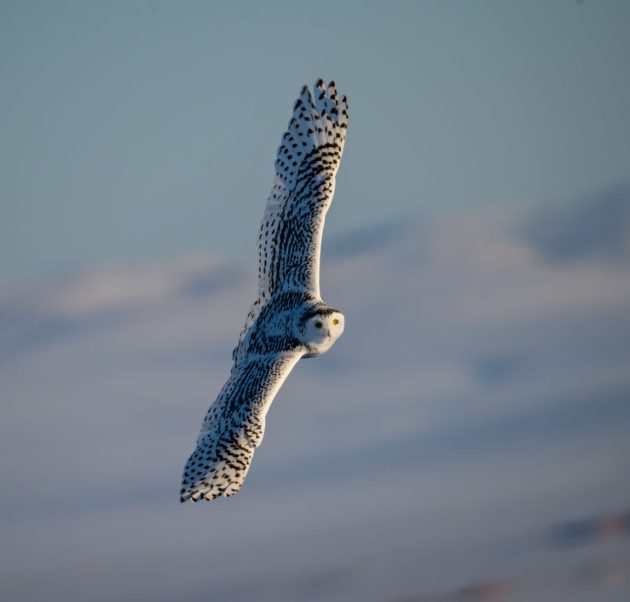
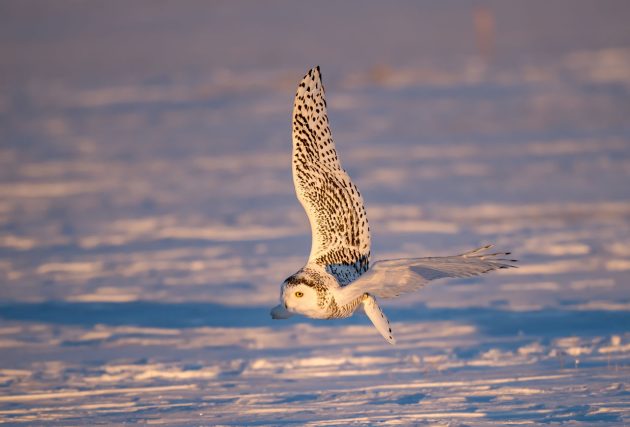
These wintering areas are generally fairly flat and open, which also makes Snowy Owls prone to select airports as wintering grounds. An understandable choice, but not a good one – apparently, on average 22 Snowy Owls are killed each year at 55 North American airports (source). And of course, colliding with such a heavy owl is also a risk for planes, which is why airports have relocation programs for the owls (kind of like witness protection programs, only different).
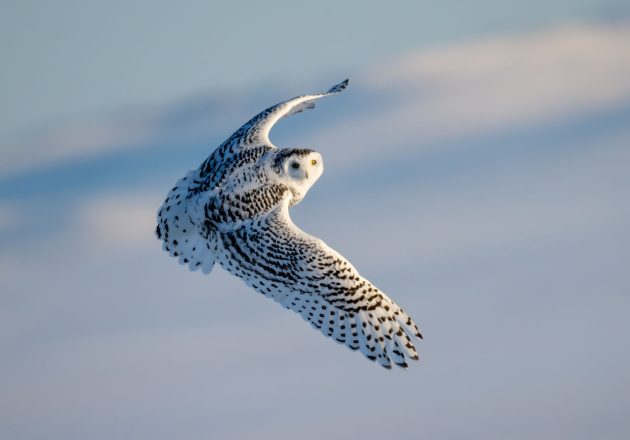
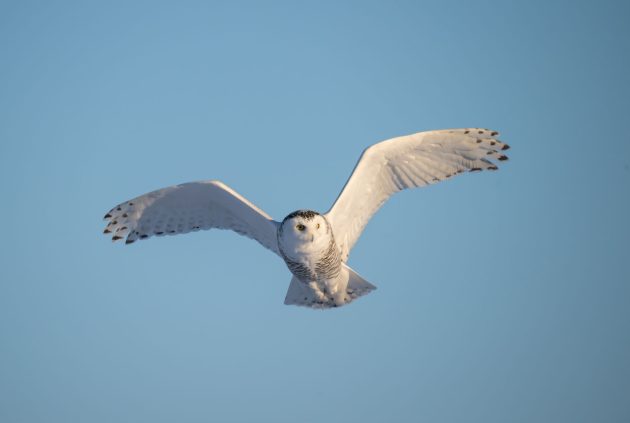
Wintering areas need to provide some food supply – typically small rodents, but also passerines, shorebirds, and carrion. The Snowy Owl may hunt at any time of the day, a characteristic that photographers like me rather appreciate. They only stop when the weather is really bad (again, very considerate of them given that these conditions are also bad for photography).
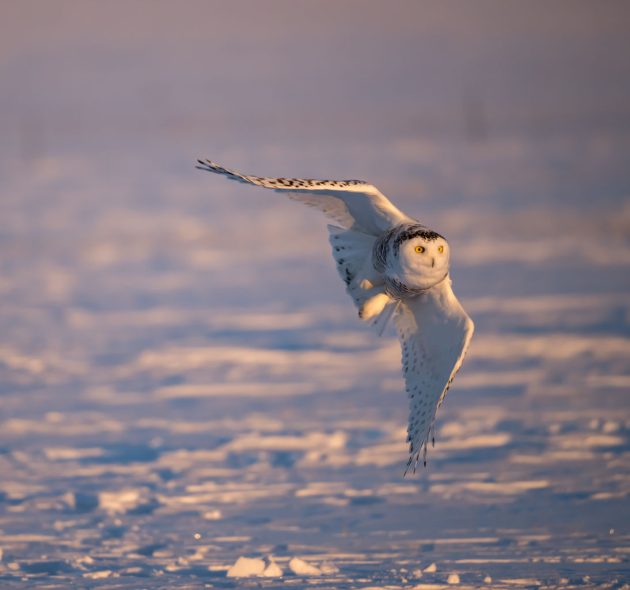
Well, actually, they stop most of the time, whatever the weather is. Another paper found that 98% of the time, Snowy Owls are just perching, which basically means doing nothing.
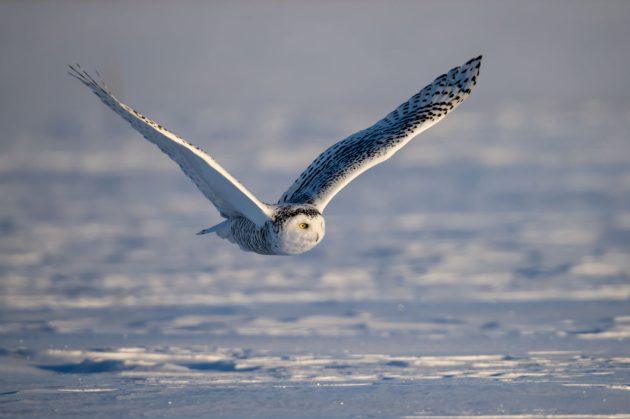
It is not only photographers who like Snowy Owls. Apparently, Greater Snow Geese nesting near nests of Snowy Owls have greater success – presumably because the owls keep away some predators of the geese.
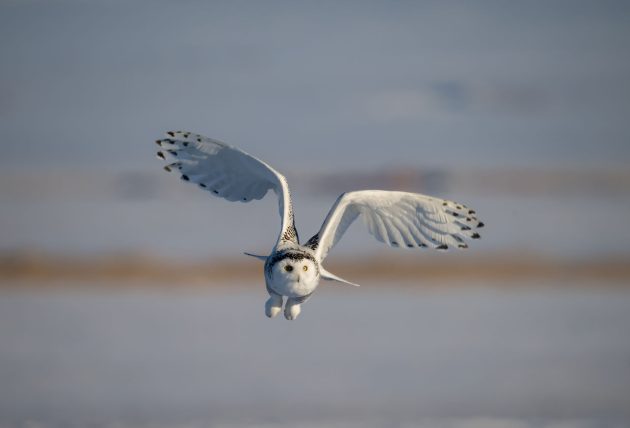
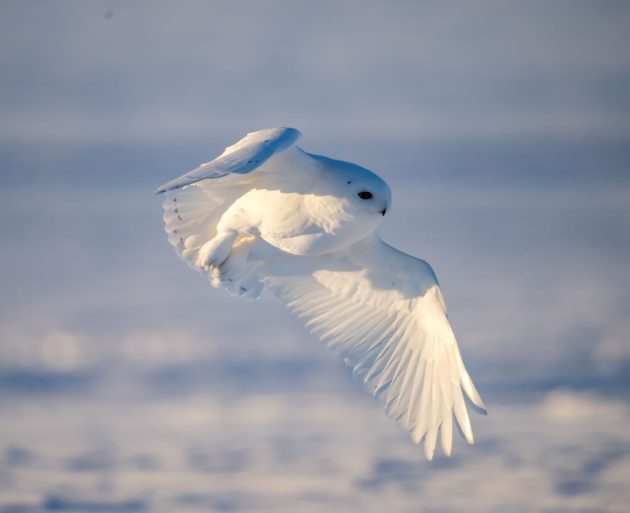
The male is almost pure white and may look like a rather simple snowman when seen from a distance.
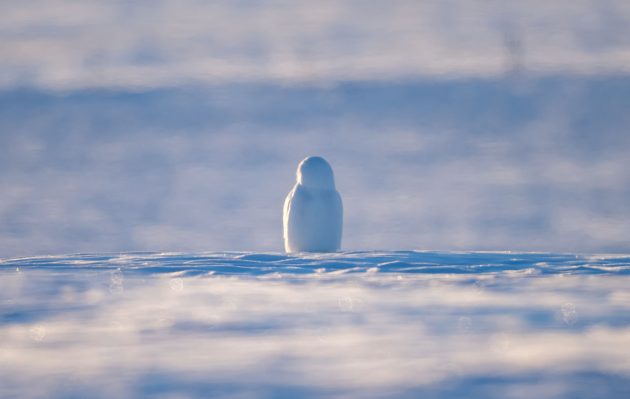
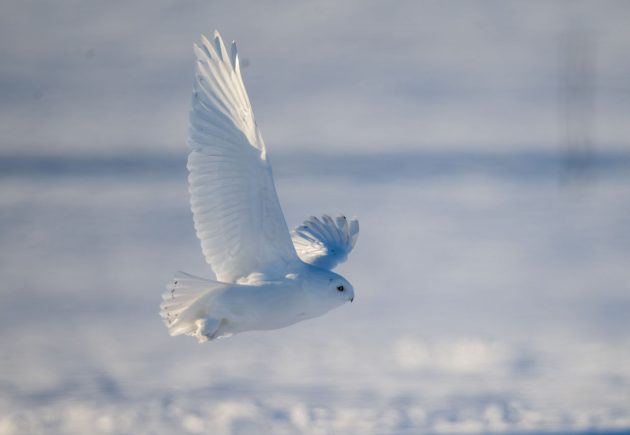
Adult females are white with brown bars.
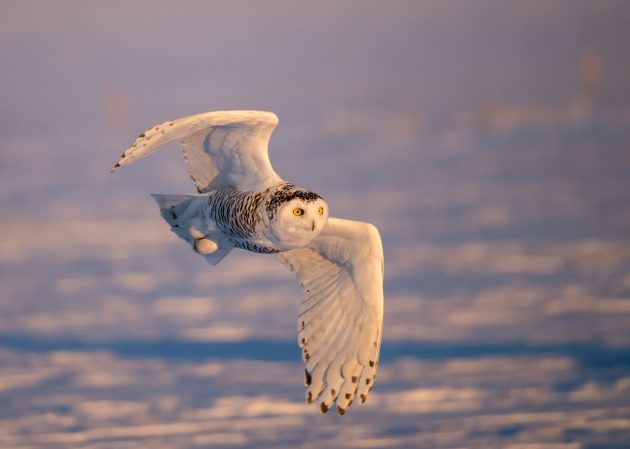
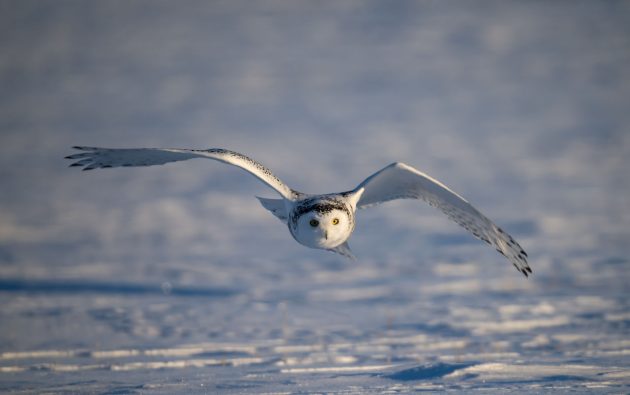
One paper specifically looks at the color of the species, asking “Why are Snowy Owls white and why have they evolved distinct sexual color dimorphism?” The first part of the question is easy to answer – camouflage in snow-covered environments. The answer to the second part seems a bit more speculative – for females, again camouflage (maybe the bars and spots blur the contours) while for males, it is about status. Only older males are fully white, which gives them higher status and presumably better odds at mate selection.
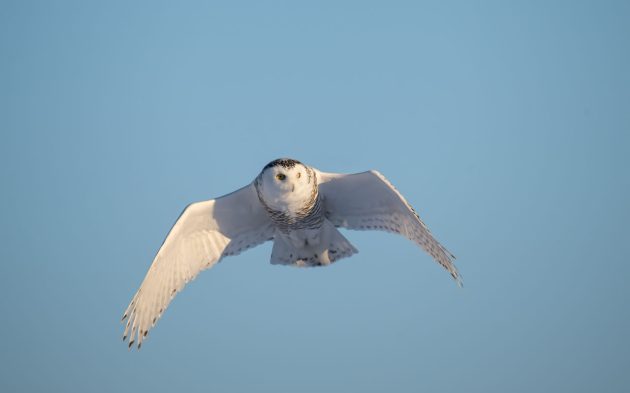

Snowy Owls are the northernmost owl species of all, and accordingly, the insulation provided by the plumage of the Snowy Owl is better than any other published for an avian species, reaching values similar to arctic foxes (source).
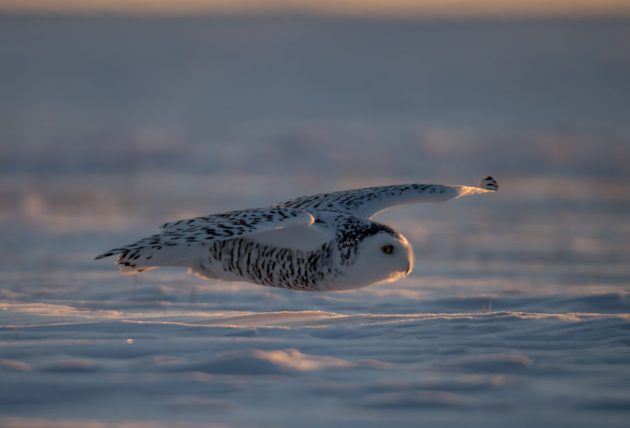
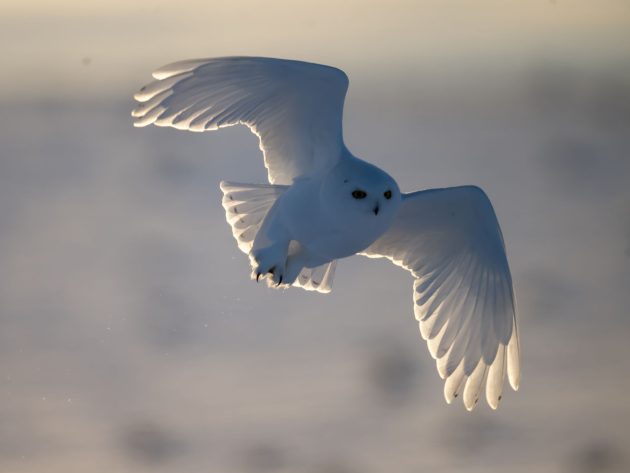
Occasionally, larger numbers of Snowy Owls migrate further South than usual, a phenomenon that has been described in the ornithological literature for quite some time now (The Auk has a paper from 1927 titled “The Snowy Owl Migration of 1926-27“).
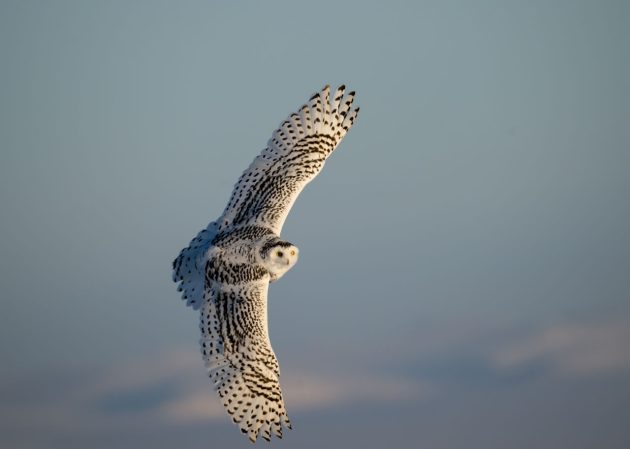
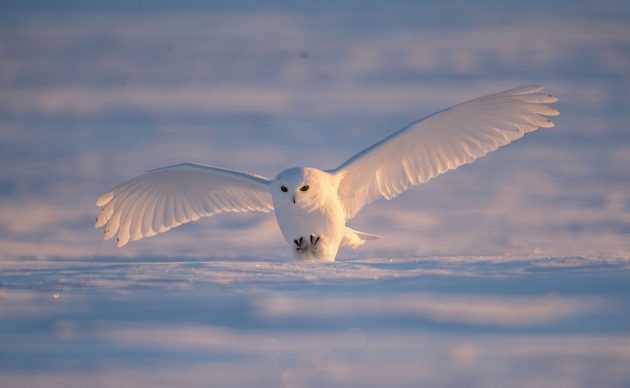
In the past, food scarcity was seen as the main reason for these irruptions, but newer research postulates that it is instead a consequence of good breeding conditions in the Arctic that create a large pool of winter migrants (source). One supporting fact is that in irregular irruptions, a large majority of the migrating birds are juveniles.
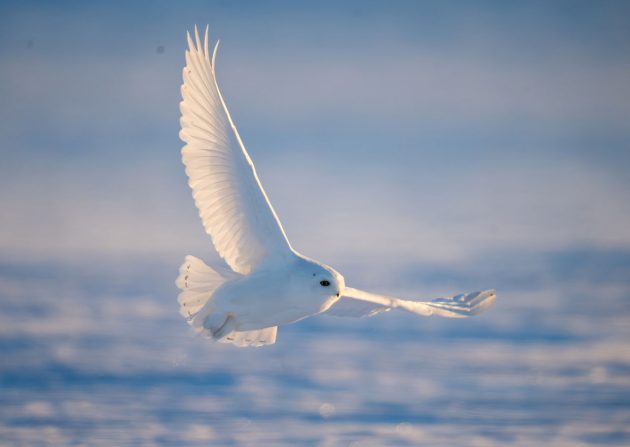
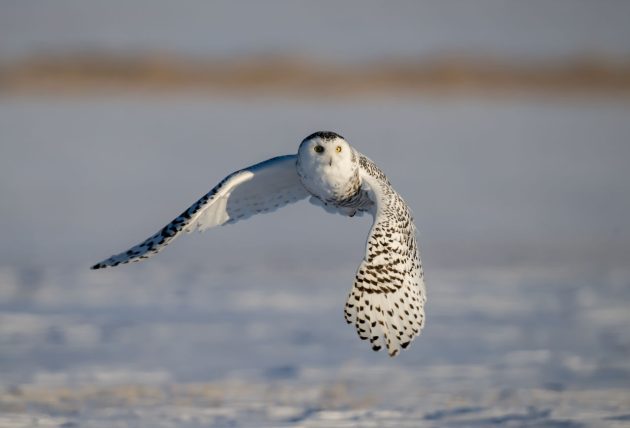
Another paper also finds that the Snowy Owls irrupting are not in a starving state and that there is no relation between body composition and the interruption intensity.
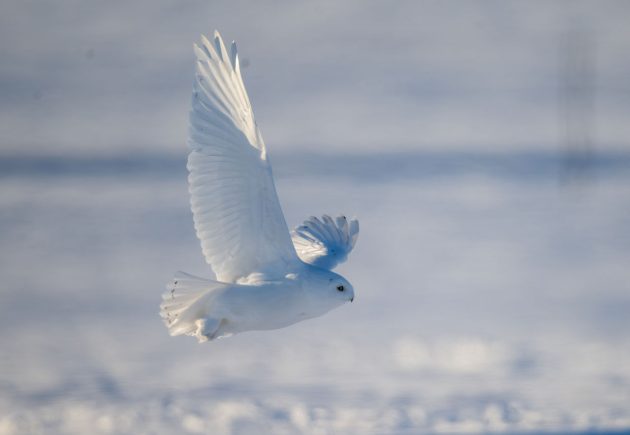
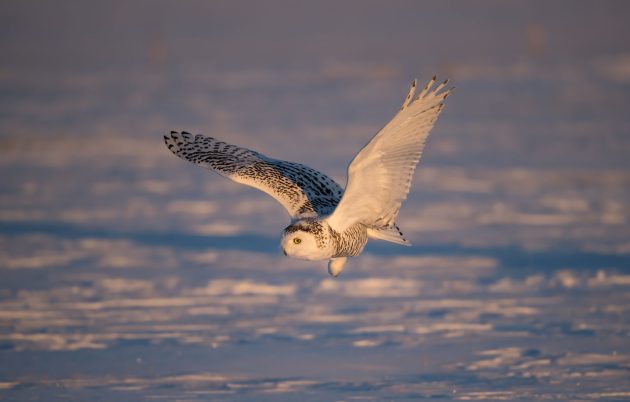
Snowy Owls are categorized as Vulnerable. In the 19th century, most of the irrupting birds in the US were shot (source: Cornell). They were also hunted by native Arctic people, though this has declined substantially. Other dangers come from human disturbances and (of course) global warming.
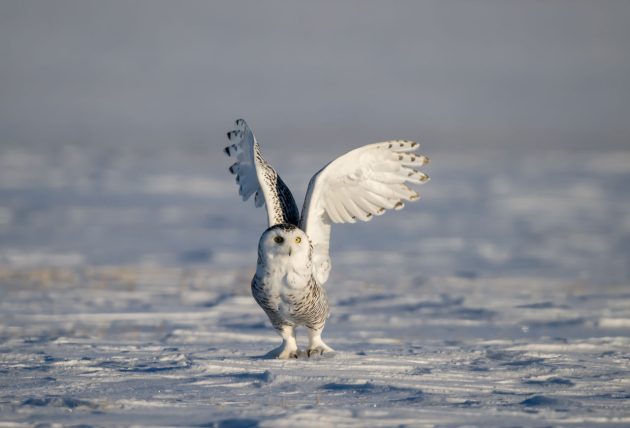
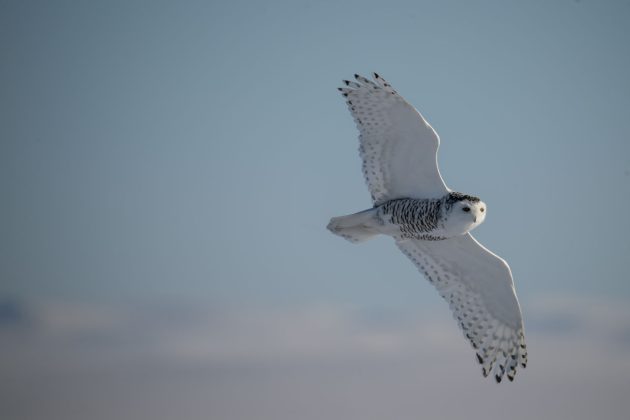
A very recent paper (December 23, 2024) estimates the number of breeding adults at 14,000 – 28,000 and indicates substantial recent declines.

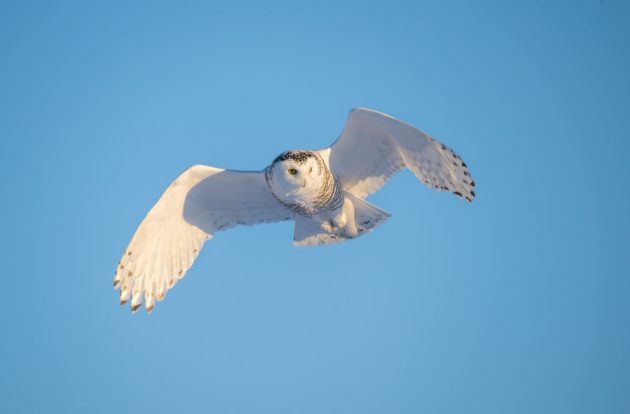
Finally, in some scientific papers, mentioning the Snowy Owl seems to be a way to make an otherwise pretty much unreadable abstract look slightly more appealing. Take the paper “Saved by the snowy owl: An intersectional analysis of indigenous rights and biodiversity in the Kvalsund wind power project in Norway”.

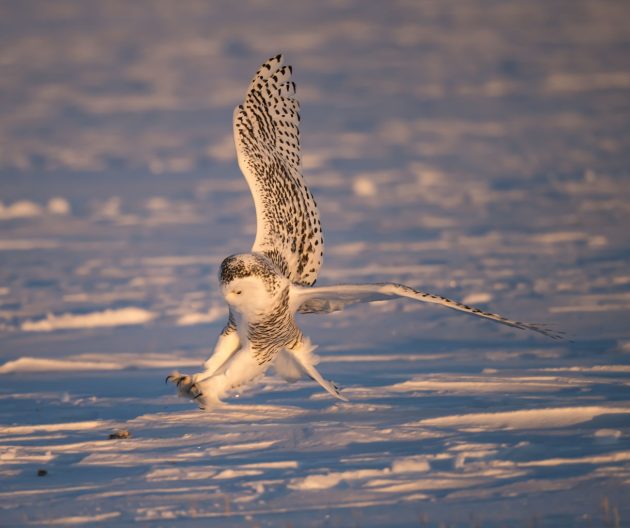
You will no longer be intrigued after reading the abstract, which instead of mentioning the Snowy Owl has sentences such as “By employing critical discourse analysis of the primary documents in the process, such as the wind power application, impact assessments, correspondences and the main decision letter, the paper examines the participation and influence of indigenous and biodiversity interests in the outcome of the wind power application.” I think I prefer taking photos of Snowy Owls to reading such papers – despite the – 20 degrees Celsius in the Inner Mongolian winter.

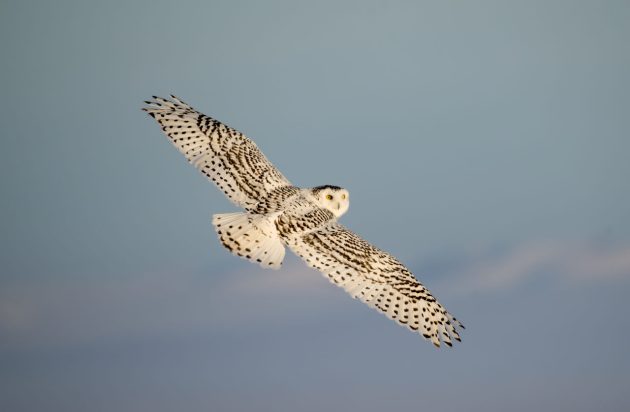
At least eBird seems to share my fascination with the Snowy Owl: an “otherworldly beautiful large owl”.
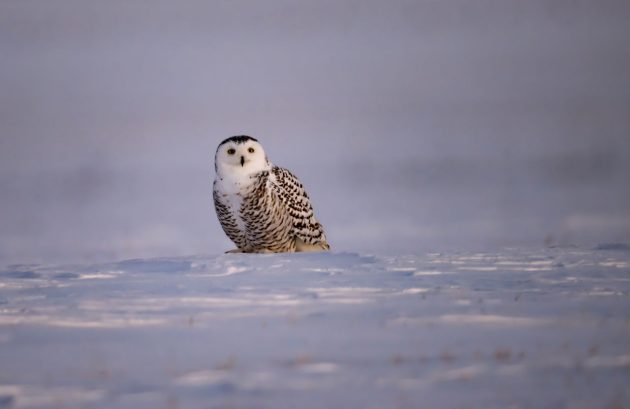

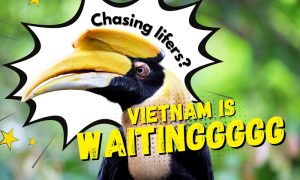
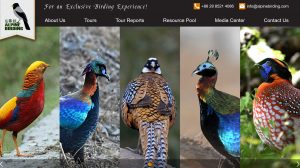
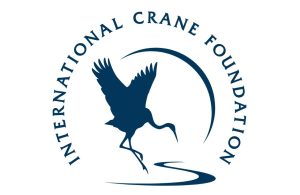
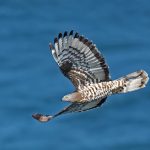
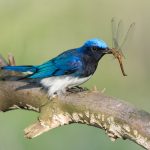
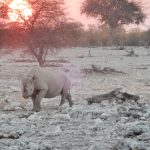
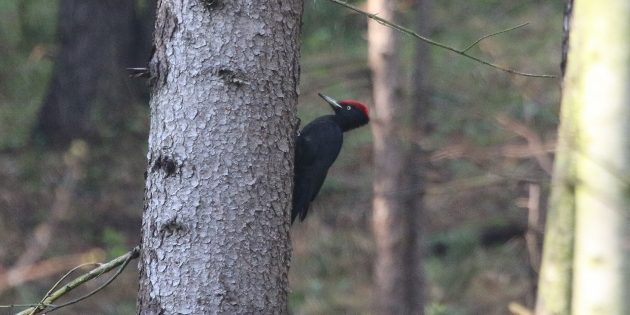
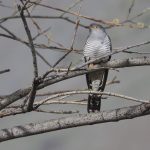

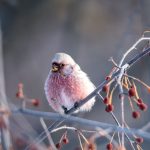
Snowy Owls are magnificent. I didn’t get to see one in Toronto in December. Thanks for giving me my Snowy fix with your stunning photographs.
Fantastic photographs, clearly worth going all the way to Mongolia and braving the cold. My last snowy owl (in Finland) never moved anything other than her head in all the time I watched her, sitting on top of an old farm building, so I wasn’t surprised to read that these owls spend 98% of their day just sitting.
What beautiful photos! Thank you for taking me some place I’ll never get to visit!